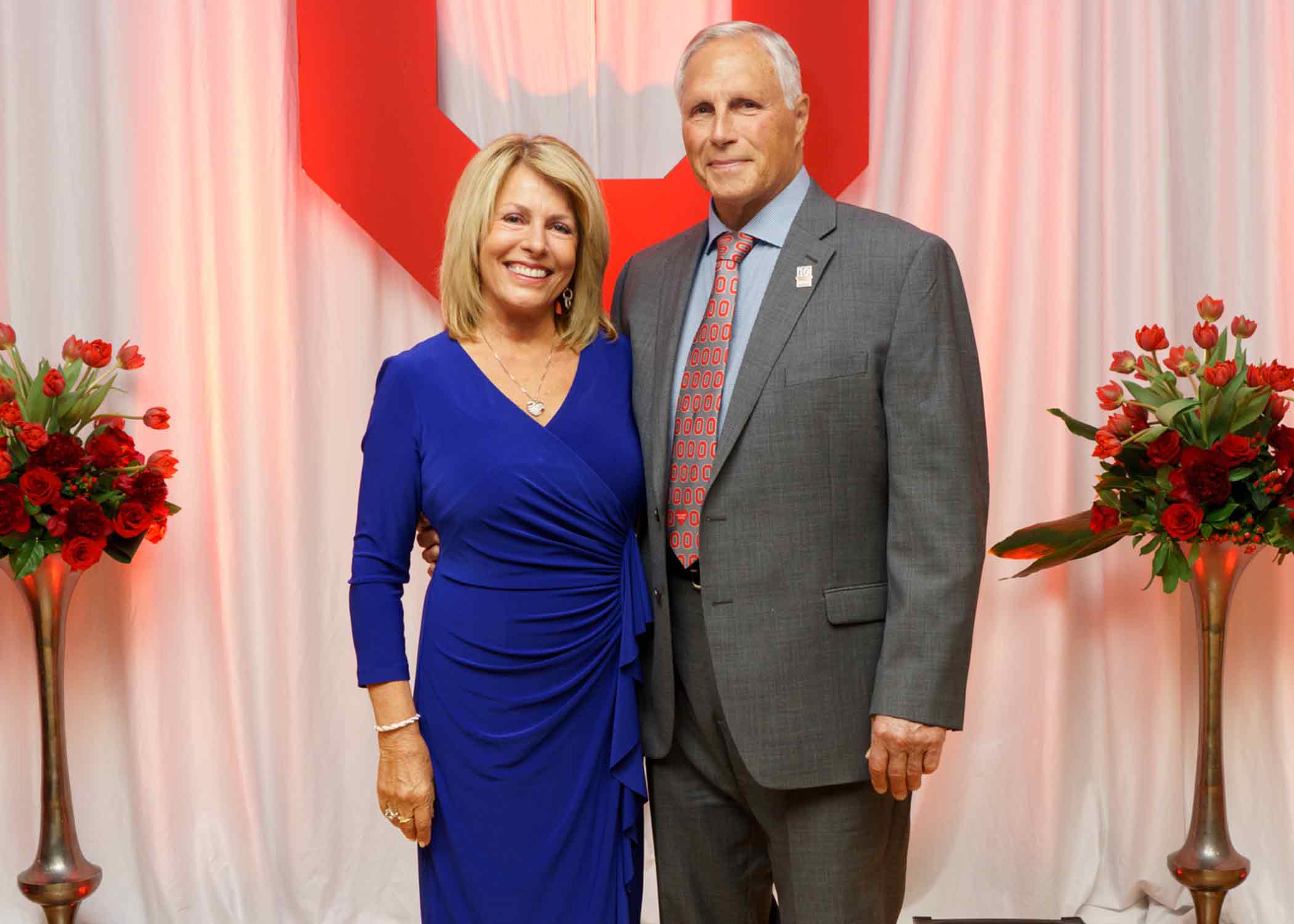April 4, 2018
 COLUMBUS, Ohio – The Ohio State University Wexner Medical Center will establish the nation’s first center dedicated to treating those with heart failure and arrhythmia with gifts totaling $18 million from Bob and Corrine Frick.
COLUMBUS, Ohio – The Ohio State University Wexner Medical Center will establish the nation’s first center dedicated to treating those with heart failure and arrhythmia with gifts totaling $18 million from Bob and Corrine Frick.Approved by the Wexner Medical Center Board and pending approval by The Ohio State University Board of Trustees at its meeting this week, their donation will establish the Bob and Corrine Frick Center for Heart Failure and Arrhythmia at the Ohio State Richard M. Ross Heart Hospital.
“This is a truly transformational gift. It allows us to leverage the strengths of our electrophysiology and heart failure programs in a unique way to better serve people with these often overlapping conditions,” said Dr. William Abraham, director of the Division of Cardiovascular Medicine.
Heart disease has shadowed the Frick family for generations: both of Bob’s parents, three uncles, one aunt, two brothers, Bob and his daughter have all faced it. At age 40, Bob suffered a heart attack. Then 11 years later he had triple bypass surgery, the same year his brother, Bernie, died from arrhythmia and heart failure. Since then, Bob has had several ablations for two types of irregular heart rhythms and he now has an implanted defibrillator.
“I wouldn’t be here without the expert care from my cardiology team at the Ross. They saved me, so Corrine and I are honored to put our money into innovative treatments and medical research at Ohio State so they can save countless others,” he said. “Maybe someday they can find a cure, and in the meantime we can support them as they find new ways to help patients live well. That’s a pretty special feeling.”
The Fricks’ gift will provide sustaining support for leadership of the center and for life-changing research and education about the connection between heart failure and arrhythmia.
“We are deeply grateful to Bob and Corrine for their incredible gift,” said Ohio State University President Michael V. Drake. “This is a remarkable example of how our doctors, nurses and staff members provided a patient and his family with unmatched treatment over the course of many years, resulting in generosity that will help others for generations to come.”
More than 6 million Americans live with heart failure and millions more have several types of irregular heart rhythms. Often, patients who have heart failure may also develop arrhythmia and vice versa. Treatment can be complex because it isn’t always clear which condition came first and what caused both conditions to develop.
Traditionally, care for patients with these two common heart disorders hasn’t been coordinated, which meant patients spent more time seeing doctors and waiting for tests, decisions and procedures.
Abraham said that’s the motivation behind the Frick Center – one integrated experience where a patient can easily see their heart failure and arrhythmia teams in one location, treatment decisions are coordinated and streamlined, and research and learning about the two diseases is connected with patient care.
“Through continued generosity and support from the Fricks, we believe this center can help us prevent the development of secondary arrhythmia or heart failure in some patients through optimized treatment and prevention strategies,” said Dr. Ralph Augostini, the Bob and Corrine Frick Chair in Cardiac Electrophysiology.
In addition to the new center, the Fricks have funded an electrophysiology hybrid operating suite at the Ross Heart Hospital. It’s the first of its kind designed specifically for electrophysiology procedures. It converts to an operating suite should complications arise during complex procedures.
The Fricks’ gift will also fund a chair in heart failure, three new research chairs, a professorship and a fellowship, all in the specialty of heart failure and arrhythmia. This will create an environment for developing novel treatments and educating future physician researchers.
“Our cardiovascular researchers make groundbreaking advances in their field. With this generous support from the Fricks, we can be an international leader in researching the intersection of heart failure and arrhythmia at the Dorothy M. Davis Heart and Lung Research Institute,” said Dr. K. Craig Kent, dean of the College of Medicine.
Ohio State’s electrophysiology program is among the top five in the country based on the number of patients treated. The advanced heart failure program is among the best, with heart transplant outcomes that exceed the national rate and are the best in Ohio.
“With a unique focus on the intersection of arrhythmia and heart failure, the Frick Center will advance patient care and outcomes as our physicians and researchers create and share evidence-based knowledge with colleagues around the world,” Abraham said.
The Frick Center for Heart Failure and Arrhythmia will begin seeing patients later this year.
###
Media Contact: Marti Leitch, Wexner Medical Center Media Relations, 293-3737 or Marti.Leitch@osumc.edu
